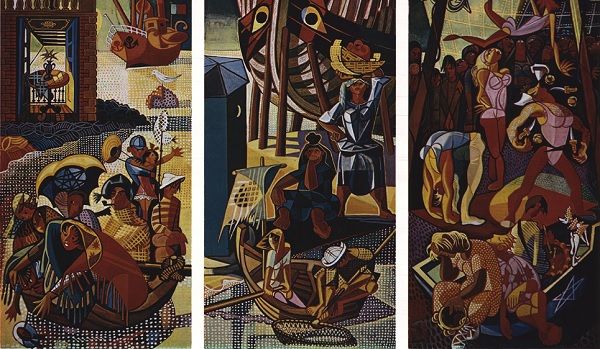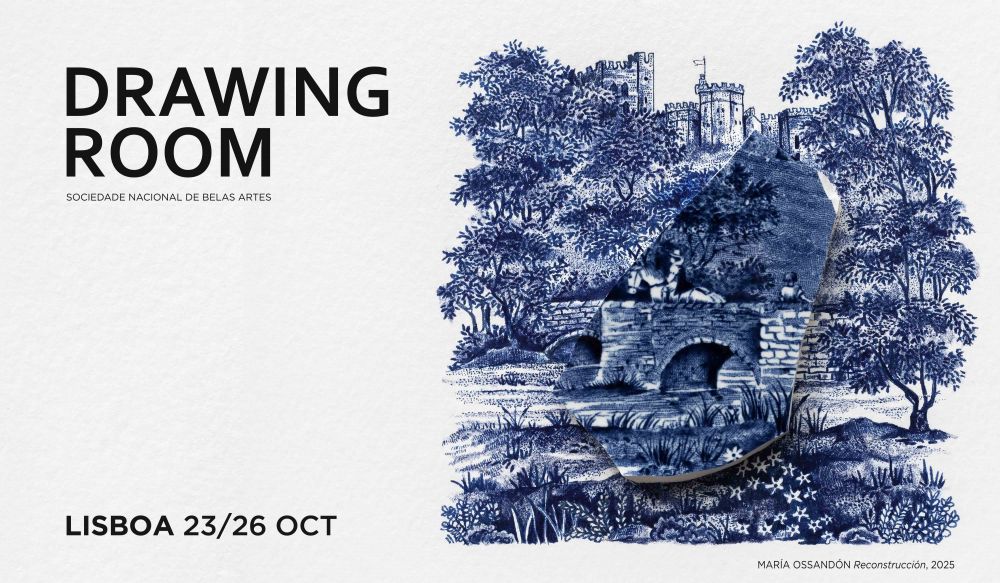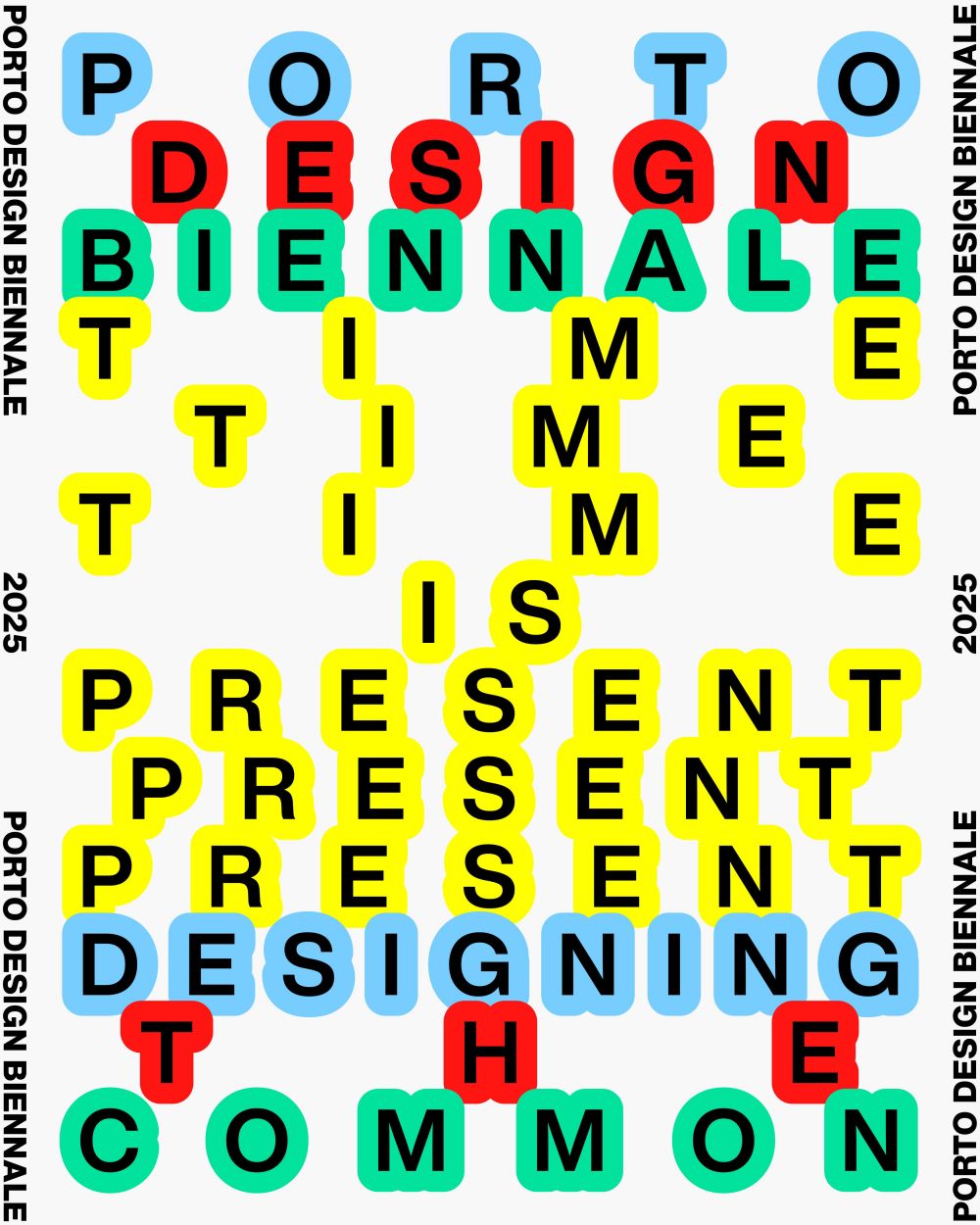Obras de referência da cultura portuguesa
"DOMINGO LISBOETA"
de JOSÉ DE ALMADA NEGREIROS (1893-1970)
Pintura mural na Gare Marítima da Rocha de Conde de Óbidos, Lisboa (1946-1948, Fragmento)
Análise de Rui-Mário Gonçalves
Tradução de Paul Bernard

Na Gare Marítima da Rocha de Conde de Óbidos, Almada Negreiros realizou seis pinturas murais, organizadas como se fossem dois grandes trípticos, um representando cenas da vida lisboeta ao domingo, junto ao Rio Tejo, e outro, o tema da emigração, condensada numa cena de despedida no cais. Nestes trípticos, conjuga-se o desenho geometrizado, de raiz cubista, com um tema populista local. Por este último aspeto, poderia considerar-se Almada um pós-moderno avant la lettre, ele que foi um dos principais introdutores do modernismo em Portugal, desde os anos dez do século vinte!
Quando foram apresentadas ao público, estas pinturas causaram polémica, tanto de ordem estética como política. Nesse momento, os jovens interessavam-se pelo neo-realismo e pelo abstracionismo geométrico. Almada estava mais interessado nas sínteses das conquistas da vanguarda e não tanto nos seus radicalismos. Estes murais, e os numerosos guaches que foi realizando durante esses anos, atualizaram um certo cubismo picassiano, de arabesco audacioso. Na estilização das figuras, na demarcação das zonas de luz e de sombra, no recorte dos perfis, todas as possibilidades expressivas das linhas são exploradas, quer sejam estruturantes quer sejam envolventes. Há por vezes malícia no modo como acentuam algum pormenor; enfatizam a teatralidade dos gestos das figuras humanas, podendo reparar-se que, quanto mais pura é a forma, mais nítido é o gesto, como o braço que se estende para apanhar o boné que caiu à água; e, ricas de implicações espaciais, as linhas comandam a composição e acentuam o construtivismo que, desde o início da sua atividade de desenhador, sempre interessou a Almada e que o levará até um peculiar abstracionismo de cariz conceptual, em 1957.
Como em muitas outras pinturas de sua autoria, Almada utiliza a luz lateral. Na Gare Marítima, ela ajuda a integrar as pinturas no espaço arquitetónico, pois essa direção é propositadamente coincidente com a da luz real que entra pelas grandes janelas.
Almada alcança, nas suas melhores obras, uma ampla generalização, sendo cada pintura sua concebida como um jogo de planos, atingindo uma visão válida da estrutura de qualquer tema. Se mantém um ou outro esquema tradicional, e se o ideal clássico decorrente da síntese das partes é visado no jogo de planos, a verdade é que as relações rítmicas dessas partes são modernas. É nessa ritmicidade que importa reparar.
"LISBON SUNDAY" by JOSÉ ALMADA NEGREIROS (1893-1970)
A mural painting at the Rocha de Conde de Obidos Maritime Station, Lisbon
(1946-1948; Fragment)
At the Rocha de Conde de Obidos Maritime Station, Almada Negreiros undertook six mural paintings, organised as if they were two triptychs, one representing scenes of Lisbon’s Sunday life, by the River Tagus, and another, the theme of emigration, condensed into a farewell scene on the quay. In these triptychs, the geometricised drawing of cubist root combines with a populist local theme. For this last aspect Almada might be considered a post-modernist avant la lettre, he being one of the main precursors of modernism in Portugal as of the 1910’s.
When they were presented to the public, these paintings caused controversy, as much for their aesthetic as for their political character. At that period, the youth were interested in neo-realism and geometric abstractionism. Almada was more interested in the syntheses of the conquests of the vanguard and not so much in its radicalisms. These murals, and the numerous watercolours he undertook during these years, updated a certain Picassian cubism, of daring Arabesque. In the stylisation of the figures, in the demarcation of the areas of light and shade, in the outline of the profiles, all the expressive possibilities of the lines are explored, whether they are structuring or surrounding. There is at times malice in the way they accentuate a detail; they emphasise the theatricality of the gestures of the human figures, one being able to notice that the purer the form the clearer the gesture, like the arm that reaches to pick up a cap that fell into the water; and being rich in spatial implications, the lines command the composition and accentuate the constructivism that, from the outset of his activity as an drawer, always interested Almada and led him to a peculiar abstractionism of a conceptual nature, in 1957.
As in many of his paintings, Almada utilises the sidelight. In the Maritime Station it helps to integrate the paintings into the architectural space, as that direction purposely coincides with that of the real light entering through the large windows.
Almada attains, in his best works, a broad generalisation, with each of his paintings conceived like a set of planes, achieving a valid vision of the structure of any theme. One or other traditional scheme is maintained, and if the classical ideal deriving from the synthesis of the parts is targeted in the set of planes, the truth is that the rhythmic relationships of those parts are modern. It is that rhythmic quality that is important to observe.
Obras de Referência da Cultura Portuguesa
projeto desenvolvido pelo Centro Nacional de Cultura
com o apoio do Ministério da Cultura

 Divulgue aqui os seus eventos
Divulgue aqui os seus eventos












